You are here:
Home →
News → News 2024.04 - Vienna Light Railway
2024-04-17 13:02:22
News 2024.04 - Vienna Light Railway
Unique opportunity!
The N railcars and the n trailer were used purely for light rail transport and on line 18G (1925-1961). The set of two railcars with a sidecar coupled in between is preserved in the Remise Transport Museum in very good condition to this day.
Halling

© Halling Modelle
WLN-SET-M
The unique new edition of the highly detailed models of the Vienna city railway set is equipped with a bell anchor drive as befits its status, all cars are factory-fitted with magnetic couplers, fine sign panels and filigree metal grab irons, and are only offered as a set. A very small six-pin NEM651 interface was installed for simple digitalisation.
The three-car set was the shortest possible reversible train, but other train formations were also possible. Three working railcars were permitted in a train, they were only to be distributed as evenly as possible in the train formation. Classic trains were formed as N-n-n-n-n-N or even N-n-n-n-n-n-n-n-N. Only trains running between Hütteldorf-Hacking and Heiligenstadt did not necessarily need a railcar at the end of the train due to the turning loops there.
The specially developed vehicles of types N (180 units), n (150 units) and n1 (120 units) were used on the electric light railway. The modified type n1 differed from the first-built sidecars due to its slightly lower weight. The large order of 450 carriages was shared by Grazer Waggonfabrik, Simmeringer Waggonfabrik, Waggonfabrik Enzesfeld and Lohner-Werke, with the latter only contributing sidecars.The last day of operation was 3 April 1961.
to the product
Related News
-
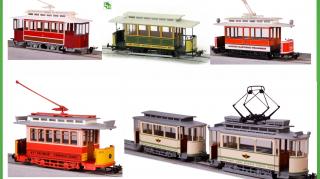
© Halling Modelle
2025-12-04
We are delighted to present five models that were personally handeled by Leopold Halling, the great-grandfather of tram modelling. The first edition of these models was delivered over 25 years ago! Today, we were able to assemble a few models from original parts and equip them with a new drive system. Contact us quickly if you want to hold a piece of tram and model tram history in your hands.
more News 2025.12 - Five rare vintage tram models
-
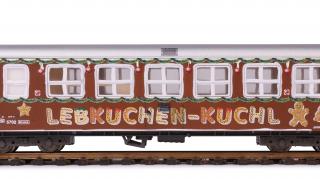
© Halling Modelle
2025-12-01
The new Christmas wagon is here!
The Mariazellerbahn buffet car is now an integral part of NÖVOG's ‘Ötscherbär’ adventure train and offers a selection of drinks as well as savoury and sweet dishes from the region. It is included on all ‘Ötscherbär’ journeys and offers refreshments for passengers during the trip to Mariazell.
more News 2025.12 - WR4ip/s 5702 „Lebkuchen-Kuchl“
-

© Halling Modelle
2025-11-29
The HALLING model advent calendar is back!
There is a child in all of us who still remembers the advent season. The days leading up to Christmas were filled with the smell of cinnamon and growing anticipation! Every day, we could see on the advent calendar how many days we still had to wait until the big day. This year, we are finally letting that child out to play again!
more News 2025.11 - Advent Calendar
-
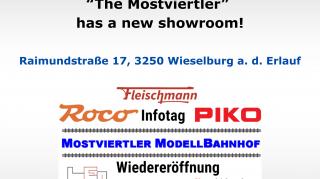
© Halling Modelle
2025-11-20
The Mostviertler has a new showroom!
Our new boss, Mr Joachim Haselmayer, also known as the Mostviertler, had already been running the Mostviertler model railway station very successfully for several decades before he bought a bag of fleas called HALLING Modelle. It started out as a small model railway shop, idyllically located in the old railway station in Wieselburg a.d. Erlauf, but it has long since outgrown its premises.
more News 2025.11 - Invitation to the Mostviertel
-
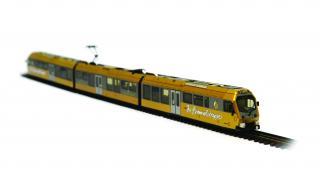
© Halling Modelle
2025-11-17
Nine places – nine treasures, but only one winner!
The Mariazellerbahn is Austria's most beautiful place! In the grand finale of the ORF prime-time show ‘9 Plätze – 9 Schätze’ (9 Places – 9 Treasures) on 25th October 2025, the Mariazellerbahn won the title of ‘Austria's most beautiful place’ for the first time, bringing it to Lower Austria. We congratulate them on their victory, even though we have always known how unique and beautiful Austria's longest narrow-gauge railway is!
more News 2025.11 - The stairway to heaven on the Mariazellerbahn railway
-
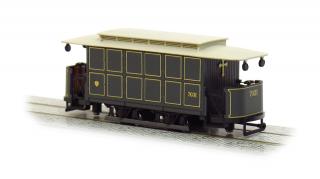
© Halling Modelle
2025-10-30
We wish you a merry All Saints' Day!
From 1918 onwards, the deceased in Vienna travelled by tram! The le 7031, converted from a former NWT steam tram car, could carry up to 12 passengers from the large Viennese hospitals, the care home in Lainz and the nursing home in Steinhof to the Vienna Central Cemetery in style.
more News 2025.10 - Viennese hearse tram le 7031er







